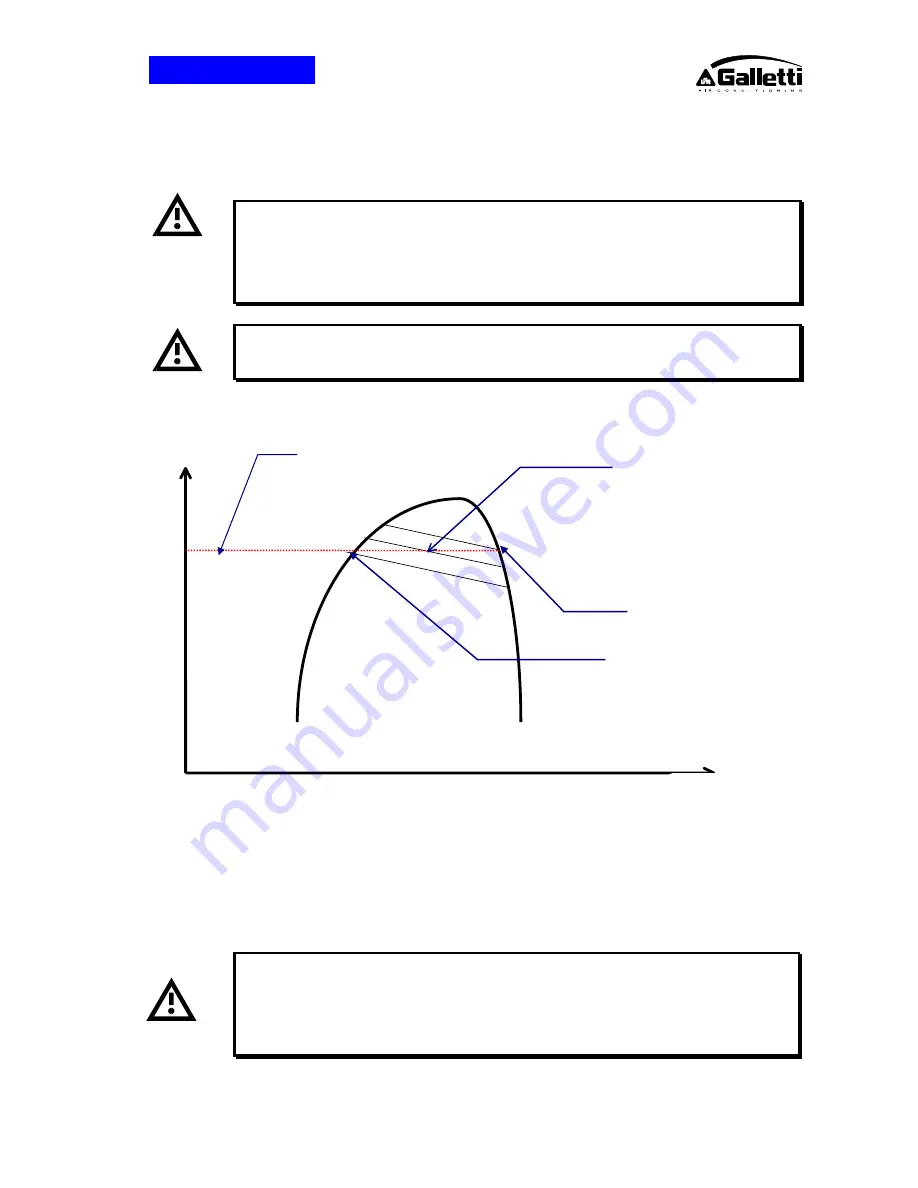
RG66001652_REV.02
27
LCW - LCR
2) read the temperature indicated on the scale of a pressure gauge connected to the liquid inlet at the
condenser outlet; refer to the pressure gauge scale for the refrigerant R407C, marked with the
initials B.P. (Bubble Point).
The degree of undercooling is given by the difference between the temperatures thus determined.
Warning: all units of the LCW series are charged with R407C refrigerant except the
versions with remote condenser which are charged with nitrogen. Any top-ups must be
made using the same type of refrigerant. This operation is to be considered extraordinary
maintenance work and must be performed by qualified personnel.
Warning: LCR units are pre-charged with anhydrous nitrogen and must be evacuated
before charging with the refrigerant.
Warning: the refrigerant R407C requires “POE” polyolester oil of the type and viscosity
indicated on the compressor rating plate.
For no reason should oil of a different type be introduced into the oil circuit.
-
The difference between the Dew Point and Bubble Point is known as “GLIDE” and this is a
characteristic property of refrigerant mixtures. If pure fluids are used, the phase change
occurs at a constant T and thus the glide is equal to zero.
STOPPING THE UNIT
To stop the unit press the "OFF" button on the front panel.
Warning: do not stop the unit using the main switch. The latter device is used to
disconnect the unit from the electricity supply when there is no passage of current, i.e.
when the unit is already turned OFF.
Moreover, if you completely disconnect the unit from the electricity supply, the crankcase
heating elements (where present) will receive no power, thereby jeopardising the
integrity of the compressor the next time the unit is started.
Average T
(T1+T2)/2
T1 (start of condensation)
DEW POINT
T2 (end of condensation)
BUBBLE POINT
Heat content h
P
Real P
compressor
outlet
R407C
















































